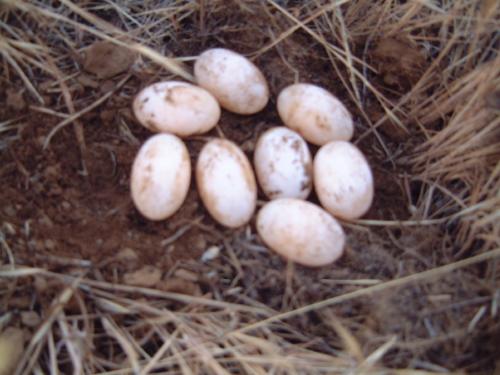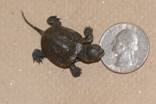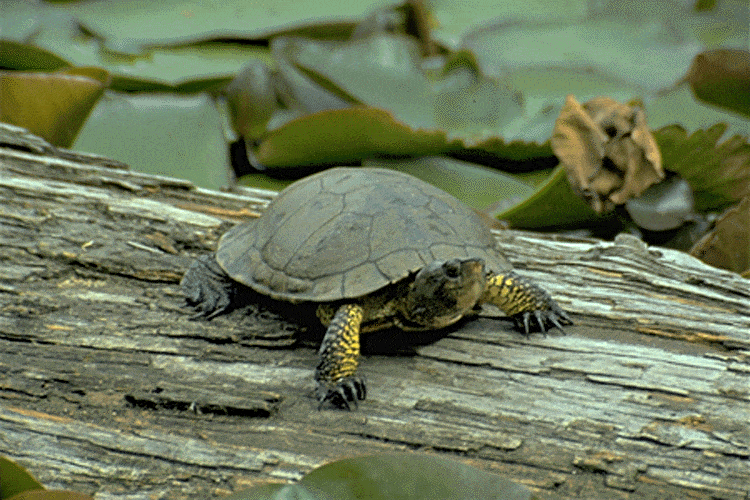| Hatching endangered pond turtle eggs in a biology lab not only aids understanding the unusual creatures, it may aid their survival as a species, too. {mp3remote}http://media.krcb.org/audio/nbr/1-15-09.mp3{/mp3remote}
Nick Geist (right) is a professor of Biology at Sonoma State University where he directs the North Bay Pond Turtle Project. | |
|
|
|

Some people have questioned taking the eggs of an endangered species for a laboratory experiment, but Nick Geist says his students may actually have saved some eggs that would otherwise have perished.
{mp3remote}http://media.krcb.org/audio/nbr/saved.mp3{/mp3remote}

Newly hatched turtles are small and vulnerable (above), until they grow and their shells harden. This may take two years or more in the wild, but the process is accelerated in laboratory conditions, where that state can be reached in about nine months.

Why invest so much effort into the lowly pond turtle? Geist suggests they are a surprisingly significant species.
{mp3remote}http://media.krcb.org/audio/nbr/sentinel.mp3{/mp3remote}
| Natural selection has enabled turtles to survive for millions of years. But some species, such as the endangered Western Pond Turtle, may need human assistance just to get through the rest of this century. {mp3remote}http://media.krcb.org/audio/nbr/1-16-09.mp3{/mp3remote} |
|
|

 Live Radio
Live Radio
